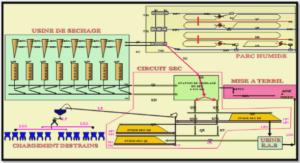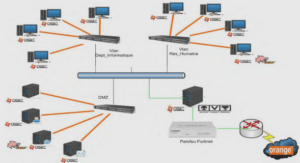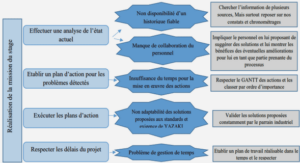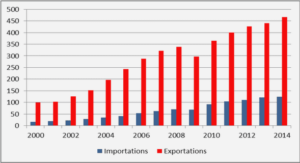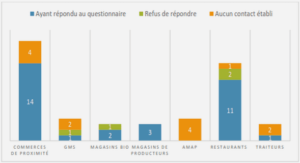Educational and language policy
The pre-colonial period
Before 1820 Malagasy children were not sent to schools. It was the role of their family to be in charge of their education. At that time, education was rather traditional, it was based on moral or social activities. The elders were those who were particularly concerned with the education of the children. They taught children traditional values such as the art of speaking, riddles, proverbs, poems and so on. Indeed, these elders had a very important role in Malagasy society, thus people showed great respect towards them. It was then the period of gerontocracy or government by old people.
During the reign of Radama I (1871-1822) there were some changes with the arrival of British missionaries. In fact, the King was convinced that these missionaries could contribute to the country’s development so that he allowed them to introduce Christianism and create schools at the same time. Thus, the London Missionary Society (LMS) taught children to read, write and count, but they also made them convert to Christianism. In 1820, education in Madagascar developed rapidily. Actually, the reign of Radama I was then particularly known for the promotion of education and Christianism.
When Queen Ranavalona I came to the throne, she was not in favour of education nor Christianism. She decided to close schools and expel all the European missionaries.
However, during his reign King Radama II who succeeded Ranavalona I was very close to the Europeans. He gave more power to some French businessmen to have control of the country’s economical matters.
During Prime Minister Rainilaiarivony’s time all the European missionaries came back to Madagascar. At that period, education and Christianism became even more dominant. There were many schools but all of them were Chistian ones. Catholic missionaries taught in French, whereas the Protestants used Malagasy as the medium of instruction. Though education was promoted, many Malagasy people were reluctant to send their children to school. They did not trust the European missionaries. They thought that their mission was dishonest. Besides, they also believed that schools were a new form of chore and that it was better for them to do the housework or grow food instead of wasting their time going to school. Actually people showed resentment towards education. Moreover, the fact that schools were under the control of a coercive government also made people think that education was a new form of domination and oppression. Consequently many people were convinced that schools were intended to reinforce the domination of the Europeans over the Malagasy people.
Madagascar under French rules (1896-1960)
In 1896, Madagascar was declared a French colony. The country then went under French rules. During the government of General Gallieni, the main purpose was to make French a dominant language used throughout the island. French became the most important language and Malagasy children were forced to learn it at school.
Though General Gallieni created schools which were known as laïc, Malagasy children did not benefit from the school programme. In fact, even though the programme did not focus on Christian doctrine as it had during the pre-colonial period, the Malagasy pupils did not have the opportunity to develop their knowledge. At that time, the curriculum was especially based on French history and civilization. It did not contain the other academic subjects that one would normally expect. Apparently, the aim was then, to make Malagasy citizens consider France as their own country so that they would have to learn more about its culture and history.
|
Part . I : Generality, theoretical issues and methodological framework
I.1 History of education in Madagascar
I.1.1 The pre-colonial period
I.1.2 Madagascar under French rules
I.1.3 Independence and the Malagasy Republic
I.1.4 Educational and language policy
I.1.5 Physical environment of the research
I.1.5.1 Classrooms
I.1.5.2 Office
I.1.6 Diachronic statistic data
I.2 Theoretical issues
I.2.1 Social aspects
I.2.1.1 Issues raised by financial constraints
I.2.1.2 Problems related to learning environment
I.2.1.2.1 Learning environment inside the classroom
I.2.1.2.2 Learning environment outside the classroom
I.2.2 Cultural aspects
I.2.2.1 Attitude towards English culture
I.2.2.2 Cultural differences
I.2.3 Linguistic aspects
I.2.3.1 Language differences
I.2.3.1.1 Differences in phonetics
I.2.3.1.2 Differences in gramamar
I.2.3.2 Problems of interference
I.3 Methodological framework
I.3.1 Applied research
I.3.2 Evaluative research
I.3.3 Action research
I.3.4 Speculative research
I.3.5 Descriptive research
I.3.6 Quota Sampling
I.3.7 Quantitative analysis
I.3.8 Holistic and Atomistic Approach
I.3.9 Data Collection Techniques
I.3.9.1 Participant Observation
I.3.9.2 Interviews
I.3.9.3 Testing
Part . II : Towards pedagogical practices contrary to the norms
II.1 Pedagogical perspectives
II.1.1 Traditional methods
II.1.1.1 The direct method
II.1.1.2 The grammar translation method
II.1.2 Transformative pedagogy
II.1.2.1 The communicative approach
II.1.2.2 The competency based approach
II.2 Specific aspects of bilingual education
II.2.1 What is meant by language proficiency
II.2.1.1 Acquisition and Learning
II.2.1.2 Differences between BICS and CALP
II.2.2 Inaccessibility to effective bilingual education
II.2.2.1 Does English proficiency require the implementation of immersion education
II.2.2.2 Does transitional bilingual education help Malagasy learners of English
II.3 Learners’ difficulties
II.3.1 Psychological issues
II.3.1.1 Motivation
II.3.2 Problem of age
II.3.3 Problems of language skills
II.3.4 Lack of opportunity for practice
II.4 Deficiencies in the teaching conditions
II.4.1 Problems of qualification
II.4.2 Lack of better trained language teachers
II.4.3 Problems related to working conditions
II.4.3.1 Poor physical conditions
II.4.3.2 Lack of suitable equipment
II.4.3.3 Large numbers of students
Part . III : Laborious progress towards bilingualism as a factor of language development
III.1 Specific territory of the learner
III.1.1 Limited pluricultural and plurilingual competence
III.1.2 Weak metalinguistic practice
III.1.3 Substractive Bilingualism
III.1.4 Underdevelopment of interlanguage
III.2 Educational system and mitigated representation of the target language
III.3 Towards a quasi integrated didactic and the weakness of the zone of proximal development
III.4 The main advantages of the research
III.5 Limitations of the research
III.5.1 Validity of the hypotheses
III.6 Ways of dealing with issues of English learning and teaching
III.6.1 Solutions for the learners
III.6.1.1 Varieties of incentive expressions
III.6.1.2 Participation
III.6.1.3 Attentiveness
III.6.2 What do learners expect from their teachers
III.6.2.1 Cooperative relationship between teachers and learners
III.6.2.2 The teacher’s roles
III.6.3 The content of the lesson
III.6.3.1 The importance of plan and organization
III.6.3.2 Curriculum development
III.6.3.2.1 Integration of culture and literature instructions
III.7 Review of teaching methods
III.7.1The Portfolio system
III.7.2 The use of the communicative approach
III.7.3 The teaching of grammar
III.7.4 The use of translation
Modelling attempt
Conclusion
Bibliography
![]() Télécharger le rapport complet
Télécharger le rapport complet

